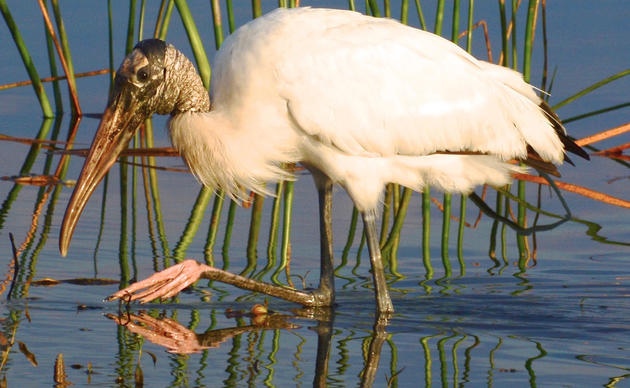When in flight, they are often in large flocks, and adults can be identified by their dark upperparts, white underparts, triangular wings with greenish underwing linings, and notched tail. These aerial songbirds have short little legs (which I find extremely amusing and cute!). They feed on flying insects. Why just the other day I saw a flock of maybe 150 cruising over Panther Island marshes performing astonishing aerial acrobatics while going after insects. In the winter, they will also eat berries. I also saw a flock of about 200 swirling around above wax myrtle trees along the roadside to work. They would swarm down onto the trees and consume all the berries in a hectic frenzy! It is an awesome thing to see.
They are commonly seen in open fields, marshes, and along woodland edges; these guys are often seen in towns as well. They form loose social colonies; tree swallows are not monogamous and males often have 2 mates at once and these vary from year to year. The nests are a small open cup made of pine needles or grass found inside of a tree cavity or nest box. They use feathers of other birds to line the nest. Normally clutch size is between 2-8 eggs that hatch after the female incubates them for 13-16 days. And the little guys hang around for 16-24 days to be fed by mom and dad before they leave the nest.




